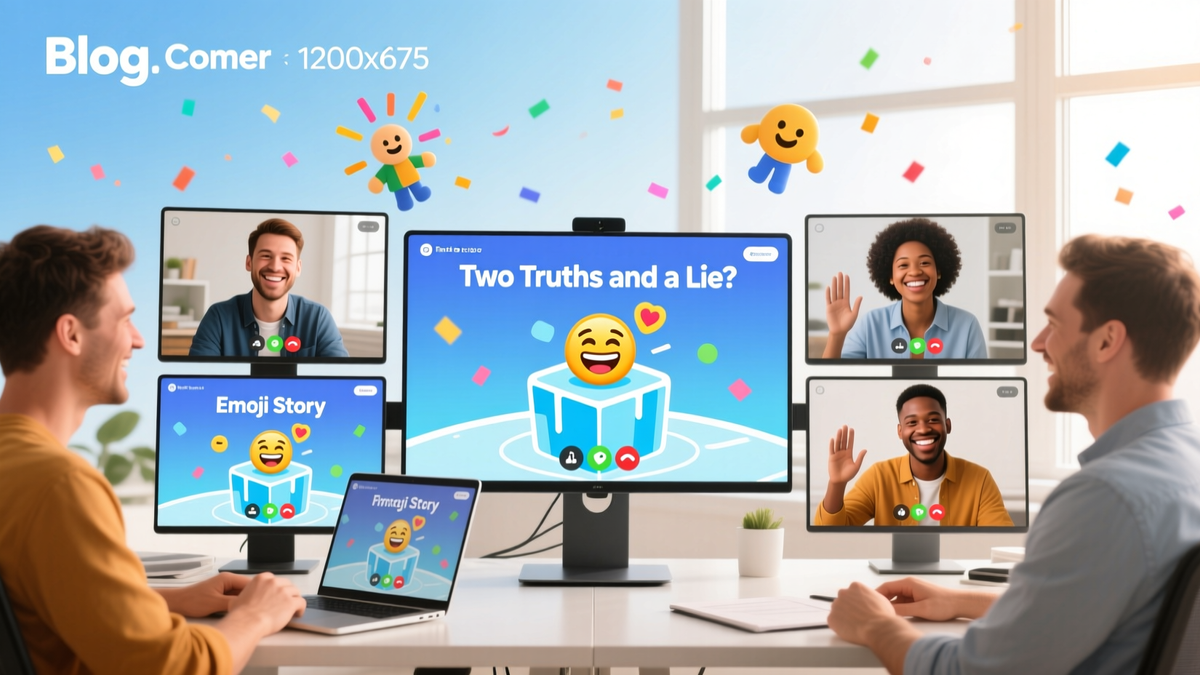
Virtual Ice Breaker Games: Boosting Engagement in Remote Teams
Discover 7 proven virtual ice breaker games, implementation strategies, and metrics to transform remote team engagement. Includes real-world case studies and actionable tips.
Why Virtual Ice Breakers Matter for Remote Teams

Remote work has redefined collaboration, but it also brings challenges: 65% of remote employees feel isolated (Buffer, 2023), and virtual meetings often lack the organic connection of in-person interactions. [IMAGE_PLACEHOLDER_1] Enter virtual ice breaker games – the secret weapon for fostering trust, creativity, and belonging in distributed teams.

The Science Behind Virtual Engagement
Research from Gallup shows teams using regular ice breakers experience 20% higher engagement scores. These games activate mirror neurons, reduce cortisol levels, and create psychological safety – critical factors for effective online collaboration.
Top 7 Virtual Ice Breaker Games for Every Team
1. Two Truths & a Lie: Virtual Edition
Adapt this classic with Zoom’s breakout rooms. Team members share three screen-shared items – two work-related truths, one fake. Colleagues guess the lie via reaction emojis. [IMAGE_PLACEHOLDER_2]
2. Virtual Scavenger Hunt
Tools like Scavify let you create timed challenges requiring team members to find objects in their workspace or take selfies with specific backgrounds. Perfect for cross-functional teams in different time zones.
3. Meme Generator Challenge
Use Imgur to create work-appropriate memes about remote work struggles. Vote on the funniest using Slido – 82% of Millennials say humor improves workplace relationships (O.C. Tanner, 2022).
Implementation: Turning Games into Culture
Case Study: Tech Startup X
After implementing weekly ice breakers, Tech Startup X saw a 37% drop in meeting no-shows and 28% faster project delivery. Their secret? Rotating facilitators and linking games to sprint themes.
4 Key Implementation Strategies
- Keep it short: 5-10 minutes per game
- Use inclusive tech: Ensure accessibility for all participants
- Rotate facilitators: Build leadership skills across the team
- Track progress: Use surveys to measure connection improvements
Measuring Impact: Beyond the Fun Factor
[IMAGE_PLACEHOLDER_3] Track metrics like:
- Meeting participation rates
- Employee Net Promoter Score (eNPS)
- Collaboration tool usage patterns
HubSpot found teams using structured ice breakers achieved 15% higher cross-departmental project completion rates.
Common Pitfalls to Avoid
Don’t make games mandatory – 58% of employees prefer optional activities (Gartner, 2023). Avoid overly competitive formats that might exclude introverts.
Building a Sustainable Virtual Culture
[IMAGE_PLACEHOLDER_4] Remember, ice breakers are just the start. Combine them with regular check-ins, virtual coffee breaks, and recognition programs. As Microsoft’s 2023 Work Trend Index shows, teams prioritizing connection see 41% higher productivity.
Ready to transform your virtual meetings? Start with one game this week, measure its impact, and iterate. Your team’s culture is worth it.
Last updated: November 16, 2025